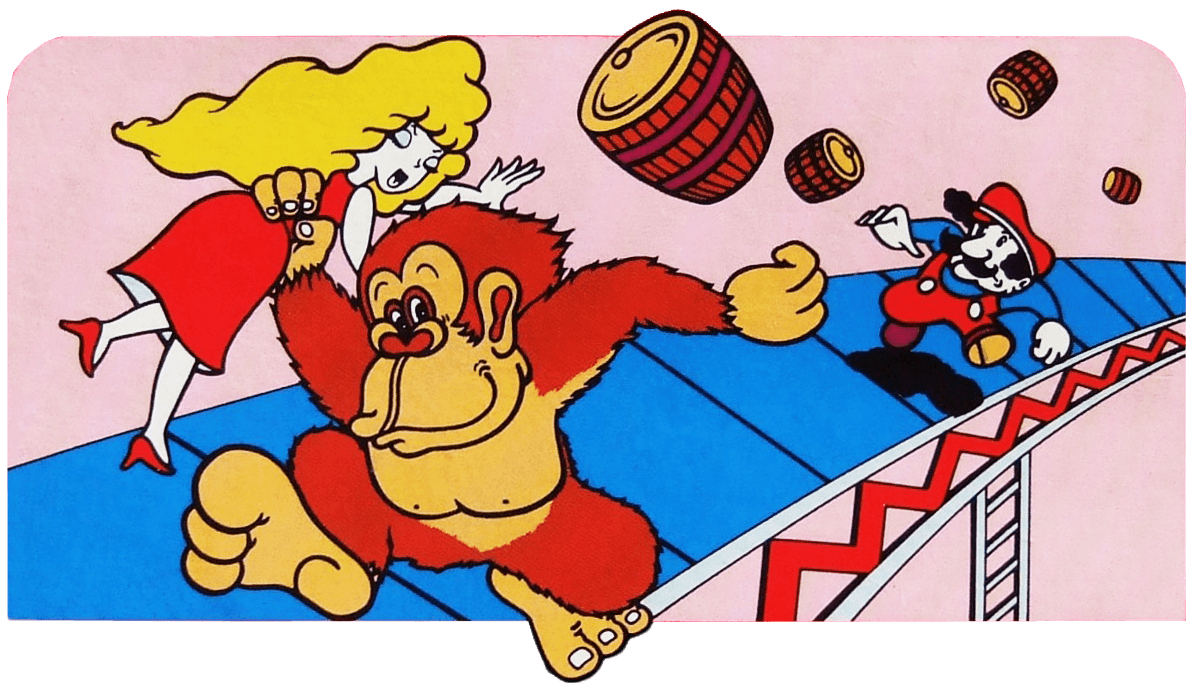Concept to Console: the creation of Mario
In gaming, there are few characters quite as iconic as Mario. The moustachioed plumber has been the face of some of the gaming industry’s biggest hits, way back to the arcade era. If you’ve ever gamed, the odds are that you’ve played a Mario game, be it platforming, karting, fighting or one of his many other hobbies. Given the notoriety of Mario, it’s hard to imagine a time without him – yet the ideas for the plumber didn’t fall out of the sky at random. I wanted to look into the history of the creation of this most iconic of characters, and explore the myriad of circumstances that led to a dumpy Italian becoming gaming’s most famous face.
At the end of the 1970s, card game manufacturers Nintendo were keen to get in on the arcade scene. It released its first ever video game, Radar Scope, in 1979, and it was a bomb. Gamers ignored it, and it caused a financial crisis at Nintendo of America. There was a real risk that the company’s adventure with gaming could finish before it had ever really begun. Nintendo needed a hit game, and they needed one that could convert and salvage thousands of unsold Radar Scope machines. For that, they turned to the essentially unknown designer Shigeru Miyamoto.
Miyamoto opted to scrap Radar Scope, instead using the existing hardware to make a new game. He planned for the game to be based on Popeye, with the player rescuing Olive Oyl from the clutches of Bluto. When the Popeye licence fell through, Miyamoto needed to create some new characters to fill their roles. After taking some inspiration from the 1933 film King Kong, Bluto became an ape, Olive Oyl became the imaginatively-titled Lady, and Popeye became Jumpman, the first version of Mario. This game would be called Donkey Kong, Miyamoto opting for ‘donkey’ because a Japanese-English dictionary said it was a synonym for ‘stubborn’.
Although he was not at this point ‘Mario’, many of the iconic design traits are already there. The choice of dungarees, a hat and a moustache were all fuelled by the graphical limitations of arcade machines, in order to ensure that the figure was identifiable as a human and to create an illusion of movement as his arms moved. The game would also establish a number of recurring tropes, such as Mario’s use of the hammer (appropriate, as Jumpman was a carpenter) and Donkey Kong’s association with barrels – in this game, he threw them at Jumpman as the player tried to rescue the Lady.
The game was an international smash hit on its release in 1981
Many arcade gamers were not keen on Donkey Kong, as it looked strange and their faith in Nintendo was low after Radar Scope. But they applied conversion kits to the Radar Scope machines, and watched as Donkey Kong became a big hit. There was one last piece of the puzzle, as the game was exported to America, and the decision was made to rename Jumpman. Miyamoto considered naming him Mr Video, but it was Mario that stuck. When Nintnedo of America aimed to get a foothold in North America, it was renting a warehouse from Italian construction tycoon Mario Segale. When the company’s president at the time realised that Jumpman looked similar to Segale, he nicknamed the character ‘Mario’.
The game was an international smash hit on its release in 1981, generating a windfall of $280 million. It saved Nintendo of America from its financial crisis and established Nintendo as a significant brand in America. It helped fund the launch of the NES, and it positioned the company for market dominance for decades. But before any of that, the company had to figure out what to do with its two smash-hit characters.
It was Kong who was gaining the most celebrity for the computer, so they released a sequel in 1982. Donkey Kong Jr. saw the ape’s son try to rescue his caged dad from the evil Mario – this is the only game in the company’s history where Mario is the baddie. However, Nintendo saw that Mario was a popular character in his own right, so they produced a game for him too. 1983’s Mario Bros saw Mario (and Luigi, in two-player mode) work to defeat bugs and creatures as they crawled out of pipes.
These games were successes, but Mario’s true day in the sun would come in 1985, as Nintendo looked for a killer launch title for the NES in America. He devised a platform adventure, Super Mario Bros, which would attract rave reviews and wind up in more than 40 million households worldwide. The NES graphical limitations consolidated Mario’s look, and the game gave him a new world and lore – the rest, as they say, is history.

Comments